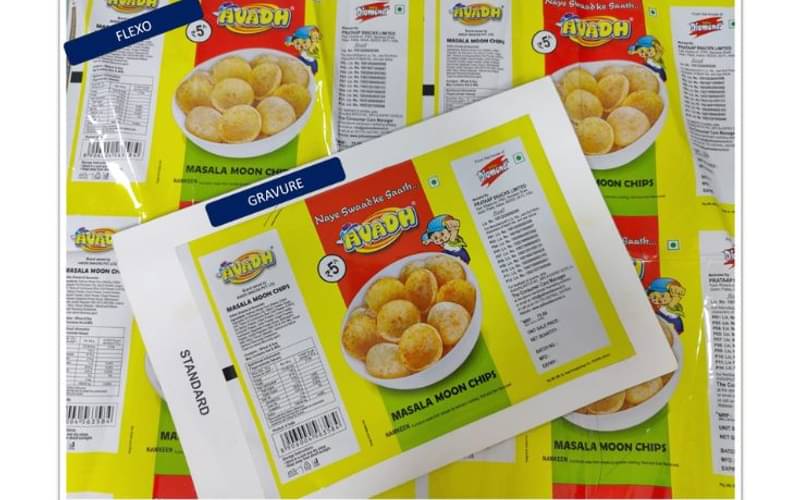The industry is working towards the standards of process control
Business owners may need to recognise that flexo is not merely an art but also a science, says Sethunath Padmanabhan of Reproflex3
14 Nov 2023 | By Ramu Ramanathan
Ramu Ramanathan (RR): How is the progress in India? What does the report card say?
Sethunath Padmanabhan (SP): In India, the industry is working towards achieving high standards of process control. Many business owners may need to recognise that flexo printing is not merely an art but also a science. Emphasising the importance of process control and adopting continuous improvement methodologies can significantly enhance flexo printing capabilities.
RR: How does Vortex from R3 score on this?
SP: Vortex, being an advanced screening technology, plays a crucial role in elevating the quality of flexo printing. It can simplify certain technical challenges by facilitating better ink transfer, leading to improved print results. Nevertheless, it's important to note that while Vortex can enhance the printing process, having a solid baseline of process control remains an absolute necessity for achieving consistent and high-quality flexo output.
RR: In what way can one optimise this?
SP: For optimal performance and quality in integrated CI flexo, a strong focus on process control, combined with the integration of advanced technologies like Vortex, can lead to significant improvements in the flexo printing process.
RR: Pre-press knowledge and imaging are critical on the pre-press side. Please share the ground reality in India about this.
SP: In India, the ground reality is that these aspects face challenges. Many converters may not fully comprehend the significance of measurements in flexo densities and dot gains. Moreover, a significant number of converters may lack the necessary measurement equipment at their shopfloors.
RR: What are the other variables in the print production of flexo that can make or break process control?
SP: This deficiency in measuring and monitoring critical variables can lead to issues during the print production process. When a job does not match the expected results on the press, converters may resort to requesting changes in the plate and trade shop may provide that often for the sake of maintaining client relations. However, this approach can have adverse effects on the print converters themselves, as it breaks the process-led investigative approach.
RR: What is the root cause?
SP: The root of the problem may not necessarily lie with the trade shop's plate, but rather with the densities or anilox cleaning at the converter’s end. Without proper measurement and comparison with the established fingerprint standard, it becomes difficult to establish a reliable and consistent printing process.
RR: How does one resolve it?
SP: The key solution to these challenges lies in the meticulous measurement of every data point involved in the flexo printing process. By regularly measuring and comparing densities, dot gains, anilox performance, and other critical variables against a set standard, converters can build a robust and effective printing process. This ensures that they have better control over the quality and consistency of their flexo prints, leading to improved customer satisfaction and overall business success.
RR: How can flexo become more popular with the implementation of EPR and the single-use plastics ban?
SP: The popularity of flexo can see a positive impact with the implementation of EPR and the ban on single-use plastics. As governments focus on environmental concerns and sustainable practices, the emphasis will shift from banning plastics to promoting recyclability. In this context, flexo printing can gain a natural advantage as it is more compatible with recyclable substrates.
RR: Is it going to become a favourite over gravure?
SP: Brands are already recognising the environmental benefits of flexo printing on recyclable materials. However, it’s important to acknowledge that the gravure industry has already established a high standard in terms of size, scale, and quality. As a result, any significant change in preferences towards flexo over gravure might not happen exponentially.
RR: If a converter has multiple print processes, and if brand approval is process agnostic, what drives the selection of print process and where does flexo play a role?
SP: In the case of converters having multiple print processes, the selection of a particular print process is often driven by factors such as brand approval and the converter's expertise and capabilities. If brand approval is process-agnostic, meaning the brand does not have a specific preference for a particular print process, then the converter can choose the most suitable process based on the job requirements and their capabilities.
RR: In this scenario, can flexo play a significant role in the selection process?
SP: Flexo printing offers several advantages, including the ability to produce vibrant packaging, versatility in handling various substrates, and the potential for reverse printing. However, the awareness and knowledge of flexo may vary among brand owners.
RR: How are brand owners responding?
SP: Many brand owners prioritise vibrant packaging without being specifically knowledgeable about or having preferences for particular print mediums. Consequently, they rely on the suggestions and expertise of the converters. This provides an opportunity for the flexo industry to promote its capabilities and demonstrate the benefits of flexo printing.
RR: I see. One thing the flexo leaders in India should implement?
SP: Currently, the flexo industry is focused on surface print jobs. However, expanding into multiple substrates and embracing reverse printing can be pivotal in attracting more brands to adopt the technology. The emerging mid-web market, with its potential for diverse applications and the advantages of flexo, may lead the way in driving the adoption of flexo printing by brands seeking vibrant, high-quality, and versatile packaging solutions.


